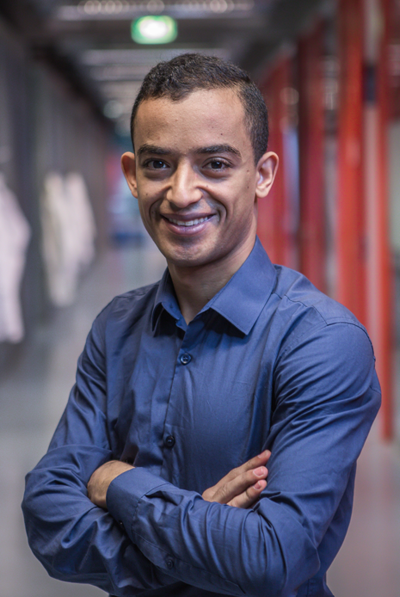A HYBRID ION EXCHANGE RESIN – BIPOLAR MEMBRANE ELECTRODIALYSIS PROCESS FOR REVERSE OSMOSIS PERMEATE REMINERALIZATION
Almohanad Abusultan is a PhD student in the department Membrane Technology and Engineering for Water Treatment. (Co)Promotors are prof. dr. ir. W.G.J. van der Meer, dr.ir. A.J.B. Kemperman and dr. J.A. Wood from the faculty of Science & Technology.
 Reverse osmosis (RO) is the leading membrane technology in producing high-quality drinking water. However, discharging RO permeate directly without post-treatment can be harmful to the water distribution piping network in particular cement and cast-iron pipes. This is because RO permeate is characterized by being acidic, has a low buffering capacity and is very soft (low in mineral content) which means it would be highly corrosive to water pipelines. Moreover, several countries have imposed regulations or technical guidelines for drinking water hardness. For instance, the Dutch drinking water standard has a minimum limit of 1.0 mM for water hardness. Therefore, post-treatment i.e., remineralization is needed to safeguard the water distribution network and comply with water quality standards and guidelines. Remineralisation post-treatment is meant to increase mineral contents in the RO permeate, in particular, calcium and magnesium hardness. Conventional remineralization methods include direct chemical dose, blending, and dissolution of calcite and dolomite material. These methods involve extra chemical use, have less control over final water quality and have large mechanical work (frequent replacement of calcite material), respectively. These methods are focused on adding chemicals or using extra products for remineralization, although hardness ions are already present in the source water. Therefore, there is a need to look for a more on-site, sustainable remineralization process design.
Reverse osmosis (RO) is the leading membrane technology in producing high-quality drinking water. However, discharging RO permeate directly without post-treatment can be harmful to the water distribution piping network in particular cement and cast-iron pipes. This is because RO permeate is characterized by being acidic, has a low buffering capacity and is very soft (low in mineral content) which means it would be highly corrosive to water pipelines. Moreover, several countries have imposed regulations or technical guidelines for drinking water hardness. For instance, the Dutch drinking water standard has a minimum limit of 1.0 mM for water hardness. Therefore, post-treatment i.e., remineralization is needed to safeguard the water distribution network and comply with water quality standards and guidelines. Remineralisation post-treatment is meant to increase mineral contents in the RO permeate, in particular, calcium and magnesium hardness. Conventional remineralization methods include direct chemical dose, blending, and dissolution of calcite and dolomite material. These methods involve extra chemical use, have less control over final water quality and have large mechanical work (frequent replacement of calcite material), respectively. These methods are focused on adding chemicals or using extra products for remineralization, although hardness ions are already present in the source water. Therefore, there is a need to look for a more on-site, sustainable remineralization process design.
This research is focused on the development and feasibility evaluation of a new hybrid remineralization process using an ion exchange resin (IEX) and bipolar membrane electrodialysis (BMED). The factors affecting the performance of each of the processes forming the new remineralization process were investigated. In addition, the interplay and trade-off between the different processes included in the remineralization process were studied. The remineralization process was proven to be feasible in producing high purity and yield of the recovered components (calcium and magnesium) as well as HCl and NaOH (products of the BMED process). However, the remineralization process application may be limited by source water concentration (high concentration is preferred), pH of the anion exchange (AIX) process feed water (low pH is desired), and energy requirement.





